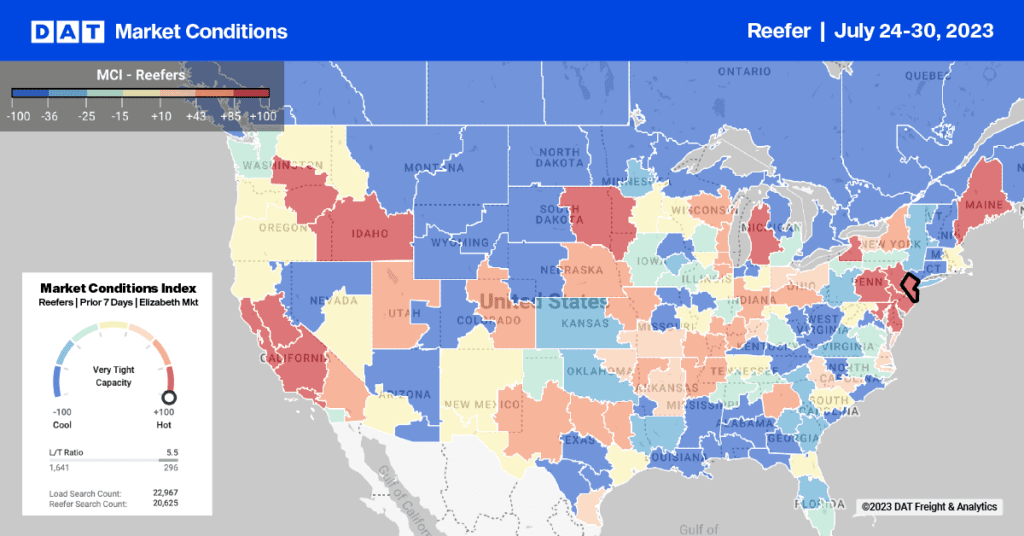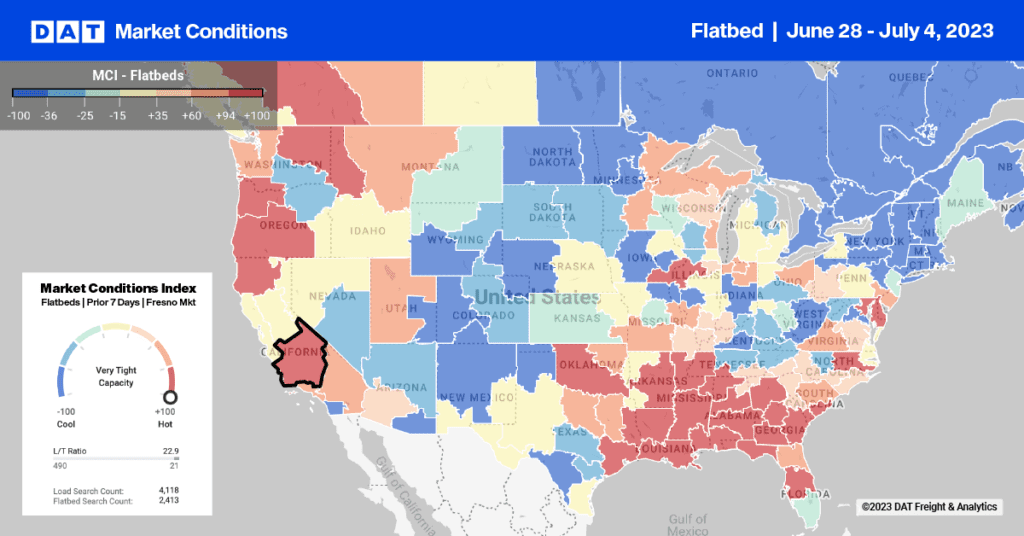I’m back on dry land after a wonderful vacation cruise. I got some sun, walked miles upon miles on tropical islands, played basketball and listened to 23 great music performances, and happily missed a whole week’s worth of political campaigning. I’ll probably keep the TV off until at least tomorrow — otherwise, I’ll be glued to at it all evening, and I don’t want to quite lose the post-vacation glow yet.
The main event that occurred in my ‘absence’ was Mega-Storm Sandy. It didn’t exactly escape my notice, as I was cruising in the Atlantic, but thankfully far enough south to be an interested observer and not a participant!
Our rate trends from last week show a lot of mixed signals. It appears that supplies are being gathered and moved from Atlanta to the storm-ravaged Northeast, and we have heard from analysts and customers that FEMA is offering top rates to truckers who help with relief efforts. FMCSA has waived hours of service restrictions for those trucks and drivers, as well.
The overall rate impact into New Jersey appears to be averaging higher by about 15 cents per mile, although markets like Lexington, KY and Winchester, VA are currently showing much higher numbers. Atlanta to northern NJ shows the most traffic of lanes more than 250 from the storm impacted area and those rates are up 67 cents from October levels, hence my conclusion that a lot of FEMA spot market traffic originates from the Atlanta area.
In the first two days of November, just after the storm subsided and floods ebbed, our DAT Load Boards recorded a surge of their own: we saw almost double the daily average number of load posts on those days, with destinations in New York and New Jersey. This was the case for all equipment types, but the trend was more pronounced for vans and reefers than for flatbeds. I expect flatbed loads to increase as construction efforts get underway. For now, most relief appears to be taking the form of food and general merchandise such as portable heaters, blankets and small construction items of the type that re-stock the depleted shelves at home improvement stores.
A few of these elements remind me of the aftermath of Hurricane Katrina in September 2005, so I looked back at records from our DAT Load Boards during the fourth quarter of that year. I wanted to know whether Katrina had anything valuable to tell us about Sandy. There was a huge pent-up demand for trucks in October 2005, and spot market load volumes reached a peak that was not surpassed until the Spring of 2012.
This spike in demand boosted rates in the whole region for a sustained period of time. FEMA seemed to be better prepared this time around but given the large population impacted, the ongoing impact on traffic and rates should be significant and will reshape the entire fourth quarter.

Hurricane Tell-All: Katrina may have something important to say to us about Sandy.


